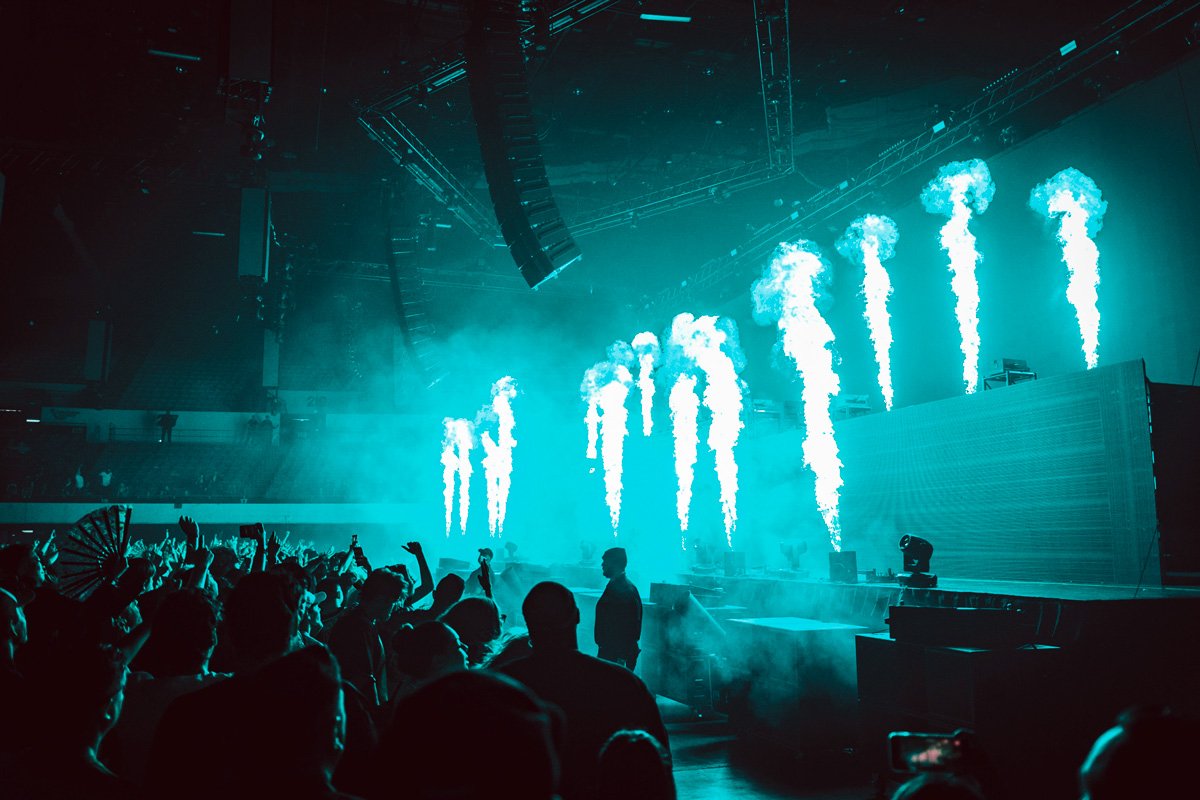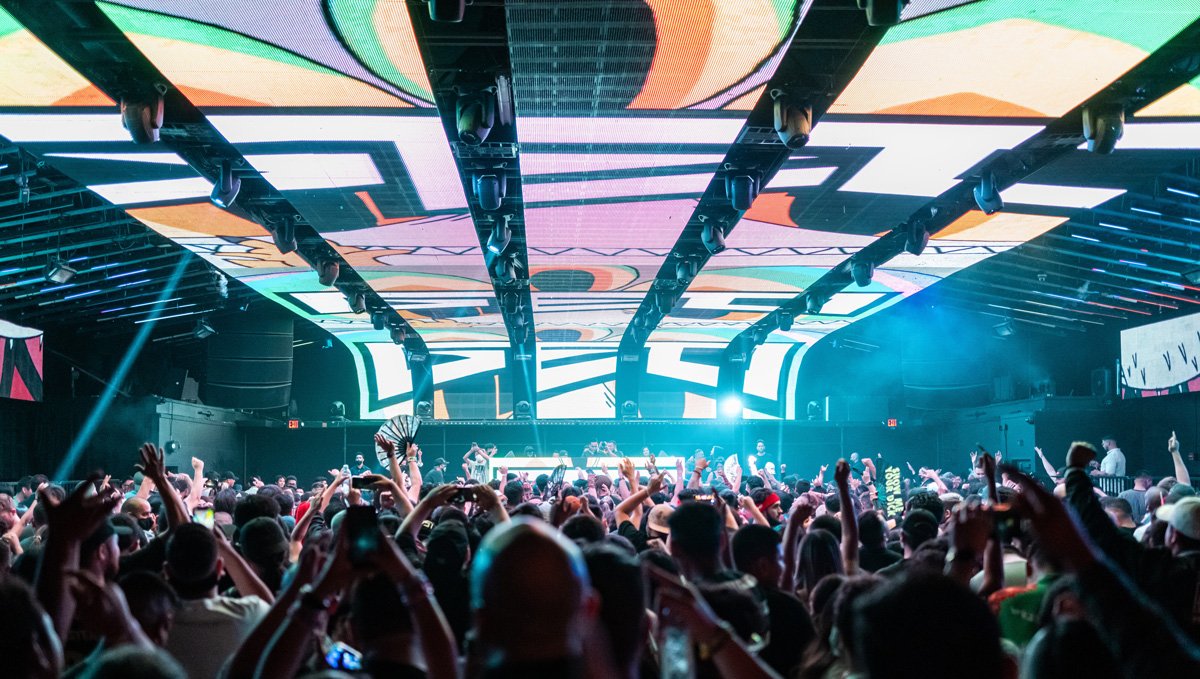Electronic Dance Music, or EDM, has evolved remarkably since its emergence in the 1980s. It’s travelled from the early days of house and techno to the ascent of dubstep and trap, branching into an array of other subgenres. In the ever-changing domain of electronic dance music, the term EDM has evolved into its own genre, characterized by mainstream sounds and pop influences.
This transformation has brought both excitement and challenges to the electronic music scene, particularly for subgenre like techno. In this blog post, we’ll delve into the transformation of EDM, how techno seamlessly fits into the broader EDM landscape, the emergence of EDM as a distinct genre, and even touch on why most of the techno enthusiasts take issue with the term EDM.

EDM’s origins and the birth of techno and minimal
1980s – 1990s: EDM’s origins
In the 1980s, the genesis of what we now know as electronic dance music, or EDM, took place in the dimly lit and subterranean world of urban club scenes. Cities like Chicago, Detroit, and New York were at the epicenter of this musical revolution. The culture that emerged in these urban hubs was fueled by a collective desire to experiment with new sounds and technologies, a rebellion against the musical norms of the time.
DJs and producers, often self-taught and resourceful, set forth on audio explorations using limited equipment. They blended elements of disco, funk, and early synthesizer-driven music, birthing innovative forms of dance music. These early pioneers, living on the fringes of the music industry, laid the foundation for what would become EDM.
The term “underground” aptly characterizes this movement.
The music was not mainstream, and the clubs and venues that hosted these sounds were often hidden from the prying eyes of the general public.
These were secret gatherings, raves, and parties that existed outside of the conventional music establishment.
1990s – 2000s: Rise of House, Techno and Minimal Techno
Throughout the 1990s and into the early 2000s, electronic dance music, including subgenres like trance, drum and bass, dubstep, electro, house, techno, and more, gained popularity, especially in Europe. Subgenres like trance, house and techno were common in the clubbing and rave scenes, but they had not yet achieved mainstream recognition.
House and Techno
House music, with its soulful vocals and four-on-the-floor beats, soon became a staple of club scenes in Chicago and New York.
In contrast, techno, renowned for its futuristic soundscapes and relentless rhythmic drive, became a sensation in Detroit and across Europe.
Both subgenres helped to popularize EDM and laid the groundwork for the explosion of electronic dance music in the 2000s and beyond.
Minimal Techno
First emerged in the early 1990s, a new subgenre of techno began to make waves: minimal techno, usually referred to as simply ‘minimal’. As the name implies, minimal techno thrives on simplicity, repetition, and the removal of excess elements, creating a more stripped-down sound compared to traditional techno.
This subgenre stood in stark contrast to the more maximalist sound of mainstream EDM during that period.
Minimal techno quickly attracted a devoted following of fans looking for a departure from the pop-oriented, commercialized sound of mainstream electronic dance music.

2000s – 2010s: EDM hits the mainstream and slowly evolves as a distinct genre
The 2000s marked a pivotal juncture for EDM. During this era, EDM began to be recognized as a genre in its own right, featuring common elements and production techniques, while continuing to serve as an overarching term for a range of subgenres.
This period laid the groundwork for the globalization of EDM, and several key factors contributed to this transformation.
1. Mainstream recognition
As electronic dance music gained popularity in the late 1990s and early 2000s, it started to receive more attention from the mainstream music industry and media. Artists like The Chemical Brothers, Daft Punk, and The Prodigy achieved commercial success, and their music was often referred to as electronic dance music or EDM.
2. EDM festivals
The rise of large-scale EDM festivals in the 2000s, such as Ultra Music Festival, Electric Daisy Carnival, and Tomorrowland, played a significant role in shaping EDM as a distinct genre. These festivals featured a mix of various electronic music subgenres but were often associated with a particular style characterized by high-energy, big-room sound, and spectacular light shows.
3. EDM in the mainstream charts
Tracks and albums produced by EDM artists and producers began to appear on mainstream music charts, achieving commercial success and recognition beyond the electronic music community. These tracks often featured pop-oriented elements, vocal hooks, and collaborations with well-known pop artists.
4. Broader audience appeal
The accessibility and appeal of EDM’s more melodic and catchy elements attracted a younger and more diverse audience. Its danceable beats and anthemic qualities made it a favorite in both clubs and on the radio.
5. Distinctive sound and production
A specific “EDM sound” started to emerge, characterized by synthesizers, build-ups, and drops. This sound often emphasises the use of the “drop”, where the music builds to a climactic moment.
This formula became a signature feature of many mainstream EDM tracks.
6. Commercialization and corporate involvement
As EDM grew in popularity, corporate sponsorships, marketing campaigns, and major label involvement became more prevalent.
These developments contributed to the perception of EDM as a separate genre with its own commercial and corporate identity.
As a result of these factors, EDM gradually evolved into a genre associated with a particular style and sound that distinguishes it from the broader electronic music spectrum.
Techno is EDM but EDM is not techno
In a nutshell, the connection between techno and EDM has its intricacies. Techno is part of the broader EDM family, but it doesn’t work the other way around. It might seem a bit tangled, but envision Techno as the hip, distinctive cousin in the vast EDM clan. Check out this nifty video to get a clearer vibe on distinguishing between EDM and techno.
Why some techno fans dislike the term EDM
Even though EDM covers a wide range of subgenres and styles, it’s often associated with a more mainstream, pop-influenced type of electronic music. This is where the issue arises when using the term EDM to describe other subgenres like techno.
Dedicated techno enthusiasts often view EDM as a broad, catch-all label that doesn’t capture the intricacies and traditions of their preferred subgenre. They believe that it oversimplifies the music and disregards the unique culture that has grown around it.
The resistance to the term EDM within the techno community is a multifaceted issue rooted in the history, culture, and musical ethos of the genre. Below are key reasons why most of the techno fans dislike the term EDM to describe techno music.
1. Cultural disconnect
Techno has deep-rooted cultural significance, particularly in its places of origin like Detroit and Berlin. It emerged from marginalized urban communities, often representing a form of rebellion and a countercultural movement.
The term EDM, which has become associated with more mainstream, commercialized aspects of electronic music, can be seen as a departure from these cultural origins.
2. Artistic integrity
Techno is often celebrated for its artistic complexity, experimentation, and a strong emphasis on sonic innovation.
Die-hard techno fans often believe that the term EDM oversimplifies the artistry behind their music, as it becomes associated with more formulaic and pop-oriented electronic tracks.
3. Commercialization
The term EDM is linked to a considerable level of commercialization within electronic music. This includes massive festivals, corporate sponsorships, and chart-topping hits. Some techno fans view these developments as contrary to the grassroots, underground ethos of their genre.
4. Genre misrepresentation
Techno is a genre with a rich and diverse history, encompassing various substyles like Detroit techno, deep techno, acid techno, hard techno, and many more.
Some techno enthusiasts feel that the term EDM lumps all electronic music together, overlooking the distinctions and nuances between these subgenres.
5. Impact on the scene
The growth of the EDM scene has, in some instances, shifted attention and resources away from the more niche and underground aspects of electronic music.
For techno fans who appreciate the intimacy and authenticity of smaller, local events, the mainstreaming of EDM can feel like a threat to the very essence of their community.
6. Perception of authenticity
In the eyes of many techno enthusiasts, the authenticity of their subculture is compromised when it’s associated with the commercialized and often flashy image of the EDM world.
They value the idea that techno is about the music and the experience, not just a spectacle.
Not all have an issue with the term EDM
Of course, not all techno fans share this perspective. Some are more receptive to the idea of sharing their music with a larger audience and see the popularization of electronic music, including the use of the term EDM, as a chance for expansion and recognition.
The debate over terminology highlights the intricate and diverse nature of the electronic music scene, with various viewpoints and preferences within its enthusiastic and committed community.

Conclusion
The journey of EDM’s evolution has been a long one, starting from its modest beginnings in the club scenes of Chicago and Detroit to its current status as a global sensation. Along this path, we’ve witnessed the emergence of various subgenres and movements, including Minimal Techno, which has left its unique mark on the EDM landscape.
Nevertheless, some techno fans remain loyal to the underground roots of their beloved subgenres and are resistant to the all-encompassing label of EDM. Ultimately, while the EDM genre continues to flourish, we need to remember that electronic dance music is a vast and diverse world, with something to offer for everyone. That’s why it’s so special!
Join the conversation
We’ve delved into the evolution of EDM into a genre and the distinction between Techno and EDM. Now, it’s your turn. Share your thoughts and experiences on this topic in the comments below. We look forward to hearing your perspective!